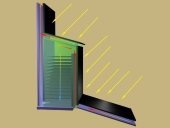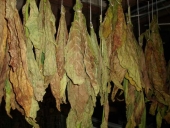
 58
58




 25
25




 18
18




 22
22




 8
8




WARNING permaculture is highly addictive, it may cause life altering changes such as valuing people, community and resources, and promote respect, learning, support and kindness .
 5
5




 8
8




 4
4




 11
11




 4
4




 7
7




Invasive plants are Earth's way of insisting we notice her medicines. Stephen Herrod Buhner
Everyone learns what works by learning what doesn't work. Stephen Herrod Buhner
 8
8




 5
5




Elanor Pog wrote:
A lot of dehydrator recipes that I do (raw cakes, breads and the like), require a sheet of some sort for the first half of drying, and then taking the sheet out and finishing the drying on the mesh tray. I bought proper silicon sheets (or some such stuff, I forget now what it is, 6 years later) As the dehydrator was free I felt ok to buy some thing like this for it. But you can use baking paper for sure.
 2
2




Debbie Ann wrote:
As I mentioned earlier, the food grade stainless steel mesh was the hardest part. All the other materials I looked into were possibly toxic in one way or another. So if anyone knows of a better or cheaper material please let everyone know. Several companies online sell it in different forms. Most wanted me to send them my request and they would quote me a price! Dang! I got mine from Geopathfinder because they sold theirs in 2' x 2' pieces, 6 for $115. {But their website has been offline for awhile now so I suspect they are out of business} Maybe someone here knows a great place to buy the stuff now. Please let everyone know. A lot of people seem to be interested!
Destruction precedes creation
 5
5




 1
1




 1
1




 10
10




 2
2




Honest conversation is the most powerful of revolutionary actions.
 8
8




Jerry Brown wrote:Hi, Y'all...
I made a solar dehydrator a couple of years ago, not nearly as well-performing as Debbie's, but instead of using expensive stainless steel screening for the racks, I just used ordinary black plastic window screening. This turns out to be made from nylon -- in my book, a pretty harmless material. And since the hardware store just cuts it off the roll, it's much less expensive.
 4
4




 4
4




Barbara Simoes wrote:Just wondering if there would be any way to use the stainless steel racks found in good refrigerators...whenever I'm having to replace appliances, I keep things that might be useful from its insides. I have some vegetable bins from refrigerators and silverware sorters from dishwashers, etc.
Gardens in my mind never need water
Castles in the air never have a wet basement
Well made buildings are fractal -- equally intelligent design at every level of detail.
Bright sparks remind others that they too can dance
What I am looking for is looking for me too!

 4
4





|
I like you because you always keep good, crunchy cereal in your pantry. This tiny ad agrees:
The new gardening playing cards kickstarter is now live!
https://www.kickstarter.com/projects/paulwheaton/garden-cards
|








